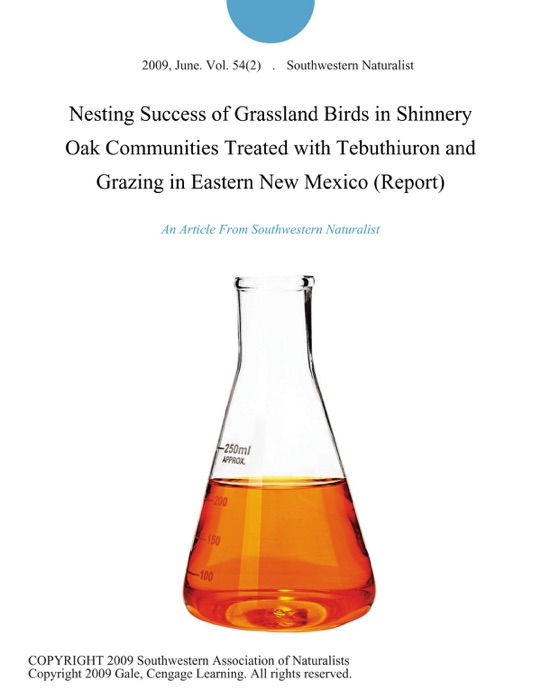(Download) "Nesting Success of Grassland Birds in Shinnery Oak Communities Treated with Tebuthiuron and Grazing in Eastern New Mexico (Report)" by Southwestern Naturalist * Book PDF Kindle ePub Free

eBook details
- Title: Nesting Success of Grassland Birds in Shinnery Oak Communities Treated with Tebuthiuron and Grazing in Eastern New Mexico (Report)
- Author : Southwestern Naturalist
- Release Date : January 01, 2009
- Genre: Life Sciences,Books,Science & Nature,
- Pages : * pages
- Size : 226 KB
Description
The short grass and mid-grass prairie ecosystem of eastern New Mexico (Partners in Flight Physiographic Area 55; http://www.partnersinflight. org) provides habitat for many species of grassland birds, including numerous migratory species of concern. Data from the Breeding Bird Survey demonstrate consistent declines across the breeding range of most species of grassland birds during 1966-2001 (Peterjohn and Sauer, 1999; Sauer et al., 2001). Furthermore, grassland birds exhibited the most widespread and greatest annual mean decline of all surveyed avian groups (Herkert, 1995). Nest depredation may contribute to decline of grassland species or limit recovery of populations (Basore et al., 1986), and depredation is a leading cause of failure of nests among grassland passerines (Martin, 1993; Davis, 2003; Winter et al., 2004). Vertical and horizontal cover at a nest site may influence likelihood of depredation; nesting birds rely mostly on decreasing detection or accessibility for protection of nests (Martin, 1995). Thus, land-management practices that affect vegetational structure may also impact success of nests; e.g., Hughes et al. (2000) determined that daily rates of survival of nests for mourning doves (Zenaida macroura) were influenced by field-level vegetational structure. In New Mexico, sand shinnery oak (Quercus havardii) communities were historically co-dominated by shrubs and grasses (Martin, 1990; New Mexico Partners in Flight, http://www.nmpartnersinflight.org/bcp.html). There is no evidence that shinnery oak invades overgrazed rangeland, but oak is an effective water-gatherer, and when given an advantage may almost eliminate associated plants due to effects of shading and competition for moisture (Peterson and Boyd, 1998). Thus, unmanaged grazing can change community composition, resulting in decreased grass production and greater frequency of shinnery oak (Peterson and Boyd, 1998). In many areas, shinnery oak has become essentially a monoculture, and there is interest in restoring communities to a more historic grass-shrub balance.